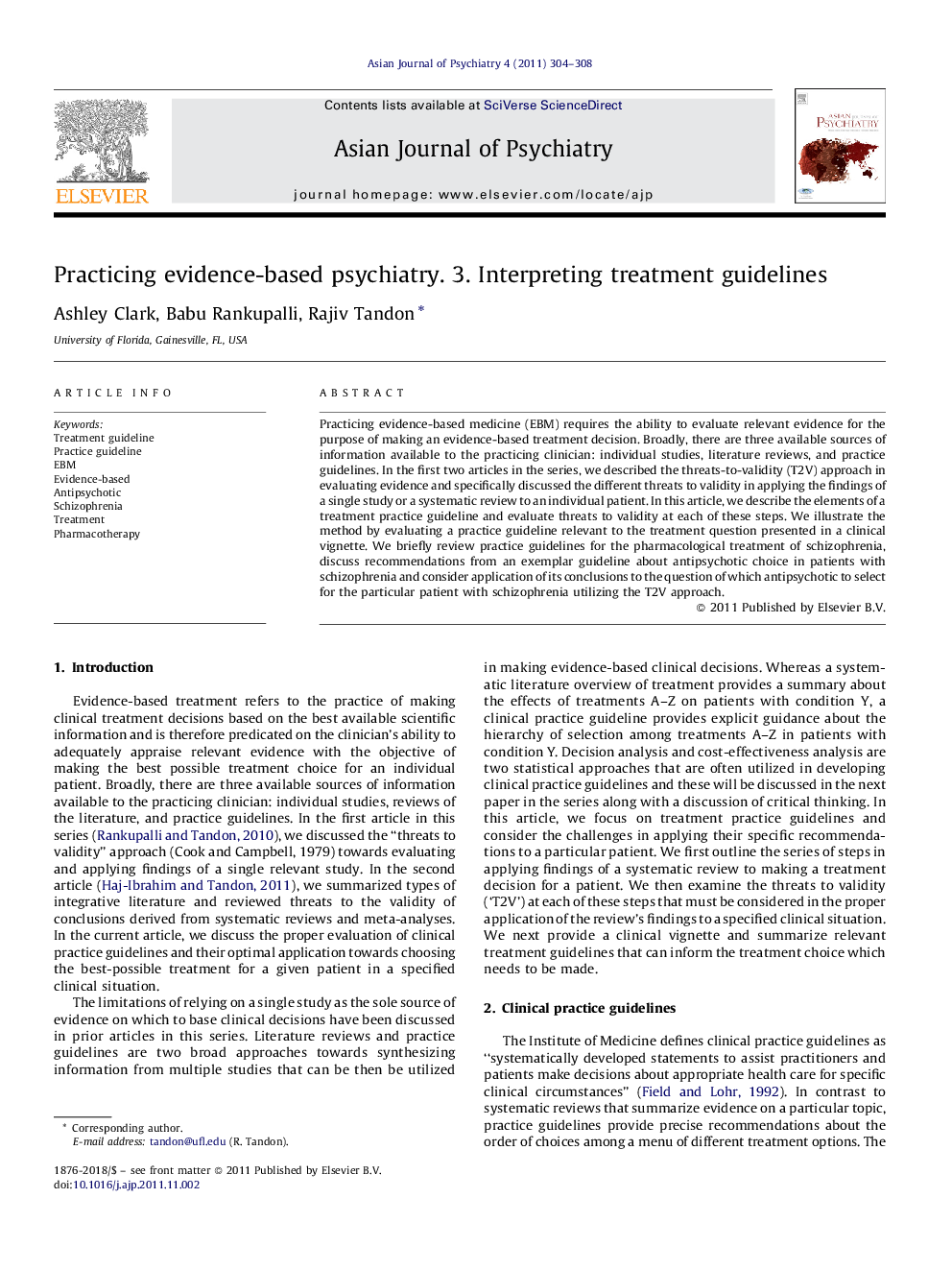| کد مقاله | کد نشریه | سال انتشار | مقاله انگلیسی | نسخه تمام متن |
|---|---|---|---|---|
| 315566 | 1432607 | 2011 | 5 صفحه PDF | دانلود رایگان |

Practicing evidence-based medicine (EBM) requires the ability to evaluate relevant evidence for the purpose of making an evidence-based treatment decision. Broadly, there are three available sources of information available to the practicing clinician: individual studies, literature reviews, and practice guidelines. In the first two articles in the series, we described the threats-to-validity (T2V) approach in evaluating evidence and specifically discussed the different threats to validity in applying the findings of a single study or a systematic review to an individual patient. In this article, we describe the elements of a treatment practice guideline and evaluate threats to validity at each of these steps. We illustrate the method by evaluating a practice guideline relevant to the treatment question presented in a clinical vignette. We briefly review practice guidelines for the pharmacological treatment of schizophrenia, discuss recommendations from an exemplar guideline about antipsychotic choice in patients with schizophrenia and consider application of its conclusions to the question of which antipsychotic to select for the particular patient with schizophrenia utilizing the T2V approach.
Journal: Asian Journal of Psychiatry - Volume 4, Issue 4, December 2011, Pages 304–308